New simulation technology significantly improves safety for self-driving cars
The famous computer scientist from the University of Maryland, Dinesh Manocha, recently collaborated with a group of other IT engineers from Baidu Research and Hong Kong University to successfully develop a system. Simulation of realistic images (photo-realistic simulation system) to train and test safety for self-propelled transport vehicles. Accordingly, this new system will provide a rich simulation world, and is much more authentic than current simulation systems, using game tools or computer graphics. High accuracy, combined with traffic rendering data is displayed according to mathematical model.
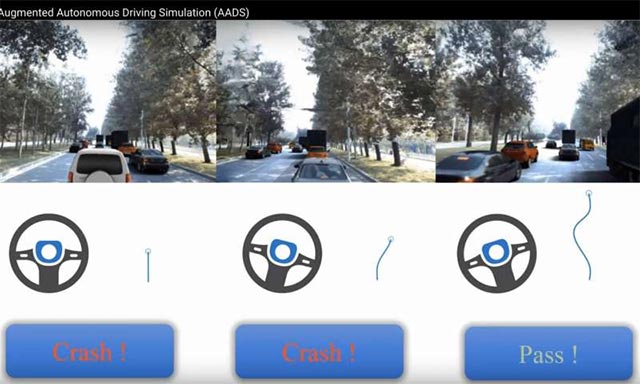 New simulation technology significantly improves safety for self-driving cars Picture 1
New simulation technology significantly improves safety for self-driving cars Picture 1
- Volvo introduced the first unmanned electric bus in Singapore
This new simulation technology is called Augmented Autonomous Driving Simulation (AADS), and is expected to help facilitate experts in assessing the safety of self-driving car systems. It is easier from right in the lab environment, while ensuring maximum reliability for unmanned traffic products before they are officially tested on the street.
Scientists have described the method they have successfully applied in a research paper published on March 27, 2019 in Science Robotics.
"Our project will represent a new traffic simulation model through which we can easily and accurately test the reliability and safety of self-propelled vehicle technology. than before deciding to deploy the test on the highway or public street, "Dinesh Manocha, one of the people responsible for the research, and professor of computer science and electrical engineering. , and is the chairman of the University of Maryland Advanced Computer Research Institute shared.
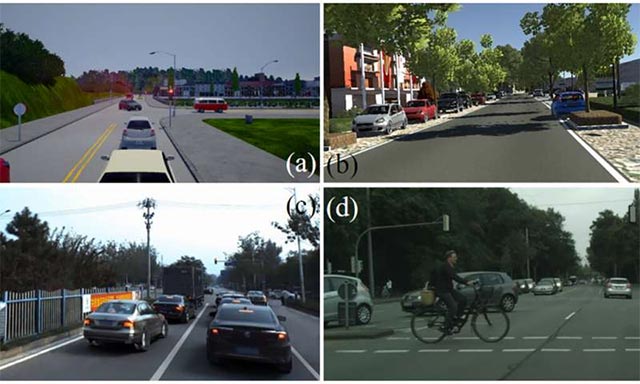 New simulation technology significantly improves safety for self-driving cars Picture 2
New simulation technology significantly improves safety for self-driving cars Picture 2
- Your future car will probably be equipped with safety airbags . outside
One of the leading potential benefits of self-driving cars is that they can play the role of 'driver' perfectly, not inferior or even better than humans, especially When 'real' drivers are often distracted, tired and emotional decisions make mistakes and the end result is a traffic accident. However, things are not as simple as that. To ensure safety, self-propelled vehicles must undergo rigorous testing and evaluation without encountering any errors. In other words, with the multitude of different situations that a car can encounter while on traffic, the self-driving car system requires safety to be met by hundreds of criteria, millions of miles of road test, in extremely difficult conditions to prove reliability in actual operation.
Although theoretically, in order to achieve this, researchers can take up to decades of conducting street tests, but preliminary evaluations can be carried out quickly and effectively. More effective and safe through computer-based traffic simulation technologies, which can accurately represent real-world situations, as well as modeling the behavior of surrounding objects.
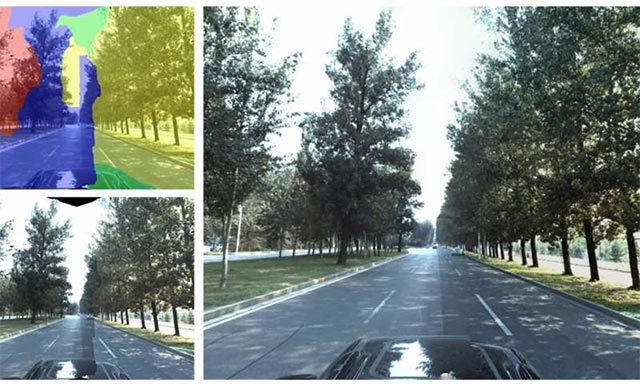 New simulation technology significantly improves safety for self-driving cars Picture 3
New simulation technology significantly improves safety for self-driving cars Picture 3
- The EU aims to bring speed limiting technology to all cars in the near future
AADS is a data control system that can more accurately represent the input situations that a self-driving car may face when operating on the road. Basically, a self-driving car will operate based on two modular systems. In particular, the system of perception modules will be responsible for receiving as well as decoding information obtained from the real world, and navigation module - the part that plays the role of giving make appropriate decisions, such as which driver to drive to, whether to brake or accelerate . based on information obtained from the perception module.
In the real world, the perception module of a self-driving car usually receives input through the camera system and the Lidar sensor is installed around the vehicle. If you don't know yet, Lidar is a method of surveying the distance to the target by lighting the target with a laser, then measuring the reflected pulses with a sensor. In the new current simulation technology of Professor Dinesh Manocha and colleagues, the perception module will receive input data from computer-generated images instead of the real world, and movements will modeled by mathematical methods, representing objects such as pedestrians, bicycles and other types of transport. Of course to do so, the researchers had to spend a lot of time creating the image because the computer image models had to be created completely manually.
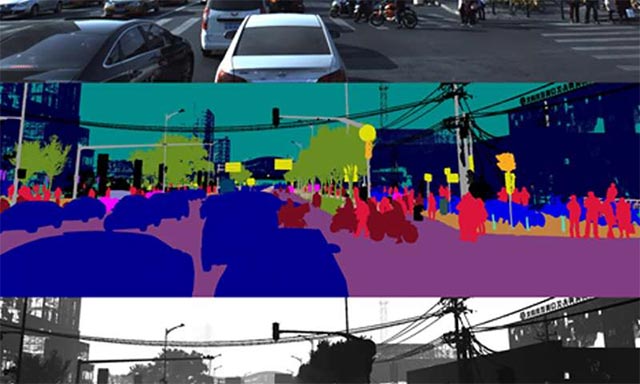 New simulation technology significantly improves safety for self-driving cars Picture 4
New simulation technology significantly improves safety for self-driving cars Picture 4
- These are 12 ambitious goals that Tesla wants to complete before 2020
The AADS system combines image, video and Lidar technology - like 3D rendering with real-world trajectory data for pedestrians, bicycles and other vehicles. These orbits can be used to predict driving behavior and the next position of vehicles or pedestrians on the road so that the self-driving system makes safer navigation decisions.
"We are trying to visualize and simulate the real world, using a combination of video and images, thus capturing real behavior and motion patterns. Practically speaking, the way People driving completely are not easy to grasp as well as simulated by mathematical models or physical laws at all, and that is really a big challenge. Realism from all the videos we have, and then modeling the social science driving behaviors, this data-based approach has allowed us to create an emulator Actual traffic behavior with extreme accuracy, Dinesh Manocha said.
To be fair, scientists have faced a long-standing challenge to overcome in using real-world image and video data to create their simulations: Every scene has to be countered. correspond to the motion of the self-driving car, although those movements may not be captured by the original camera or Lidar sensor. In addition, any angle or scene that is not photographed or recorded must be displayed or simulated using predictive methods. This is the reason why simulation technology always relies heavily on computer-provided graphics, and at the same time, physics-based prediction techniques.
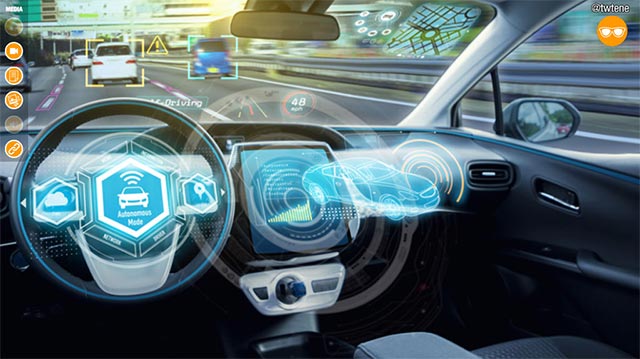 New simulation technology significantly improves safety for self-driving cars Picture 5
New simulation technology significantly improves safety for self-driving cars Picture 5
- New charging technology allows electric cars to charge for 3 minutes to travel 100km, as fast as filling gasoline
To overcome these challenges, researchers have developed technology that allows to isolate many different components of real-world street scenes, and then turn them into individual elements with Can be combined to create a multitude of different realistic driving scenarios.
With AADS technology, vehicles and pedestrians can be 'removed' from an environment and placed in a different environment than appropriate modes of movement and lighting and environmental conditions. Besides, the street can be redesigned with many different traffic levels. The variety in the perspective of each scene will provide more realistic aspects of changing lanes and turns. In addition, advanced image processing technology also allows smooth transitions, and at the same time helps reduce the deformation of models compared to conventional video simulation techniques. On the other hand, image processing techniques are also used to extract the trajectory and from there, help model the behavior of the driver.
"Because we're using video and motion in the real world, our perception module will possess much more accurate information than the methods used before. And then, Due to the simplicity of the emulator, we are able to more effectively evaluate the navigation decisions of the autopilot system, 'added Professor Dinesh Manocha.
 New simulation technology significantly improves safety for self-driving cars Picture 6
New simulation technology significantly improves safety for self-driving cars Picture 6
- The 11th-grade student made his own solar-powered electric car
Besides, Professor Dinesh Manocha also said that through the introduction of this technology, scientists also hope that some corporations are implementing self-propelled vehicle development projects that can combine Data-based approach and new simulation technology to improve their own simulations, thereby helping to test and evaluate the autopilot system more accurately.
You should read it
- Not only can lighting LEDs, potatoes can be made into a self-driving car running at 7.3m / day.
- Take a ride on Tesla's self-driving car and watch the self-driving Tesla car video on the real road
- MIT strives to develop an AI model that can drive almost like a human
- Computer manufacturing Nvidia can drive automatically
- How to use Cars 4D + automotive screenings and 4D car kits
- How to handle frosted glass, blurry mirror for drivers when it is raining
- Teenage programmer brings real-life self-driving car technology to the blockbuster game GTA 5
- Volvo introduced the first unmanned electric bus in Singapore
- Car Simulator 2: How to play the car simulation game on the phone
- Elon Musk: Tesla's self-driving car will amaze the world
- Can self-driving cars solve traffic jams?
- Great way to drive cars safely for women
May be interested

WhatsApp now allows users to control who is allowed to add themselves to the chat group

Running on Chromium core but Microsoft Edge can play Netflix 4K videos, 'eat off' Google Chrome
![Photo of [Infographic] How does IIoT impact key industries?](https://tipsmake.com/img/no-image-200-120.png)
[Infographic] How does IIoT impact key industries?

Researchers use computer vision to better understand optical illusion

Chrome added policy to allow the admin to uninstall the blacklist extension

Samsung is preparing to launch the first Galaxy camera pop-up, which can be rotated 180 degrees


![Photo of [Infographic] How does IIoT impact key industries?](https://tipsmake.com/http://tipsmake.com/data/thumbs/[infographic]-how-does-iiot-impact-key-industries-thumb-Irr2fCwlB.jpg)



 Take a ride on Tesla's self-driving car and watch the self-driving Tesla car video on the real road
Take a ride on Tesla's self-driving car and watch the self-driving Tesla car video on the real road Teenage programmer brings real-life self-driving car technology to the blockbuster game GTA 5
Teenage programmer brings real-life self-driving car technology to the blockbuster game GTA 5 Car Simulator 2: How to play the car simulation game on the phone
Car Simulator 2: How to play the car simulation game on the phone In the future, cars may be equipped with safety airbags outside the car
In the future, cars may be equipped with safety airbags outside the car The EU aims to bring speed limiting technology to all cars in the near future
The EU aims to bring speed limiting technology to all cars in the near future Top 10 best realistic car driving simulation games of 2024
Top 10 best realistic car driving simulation games of 2024